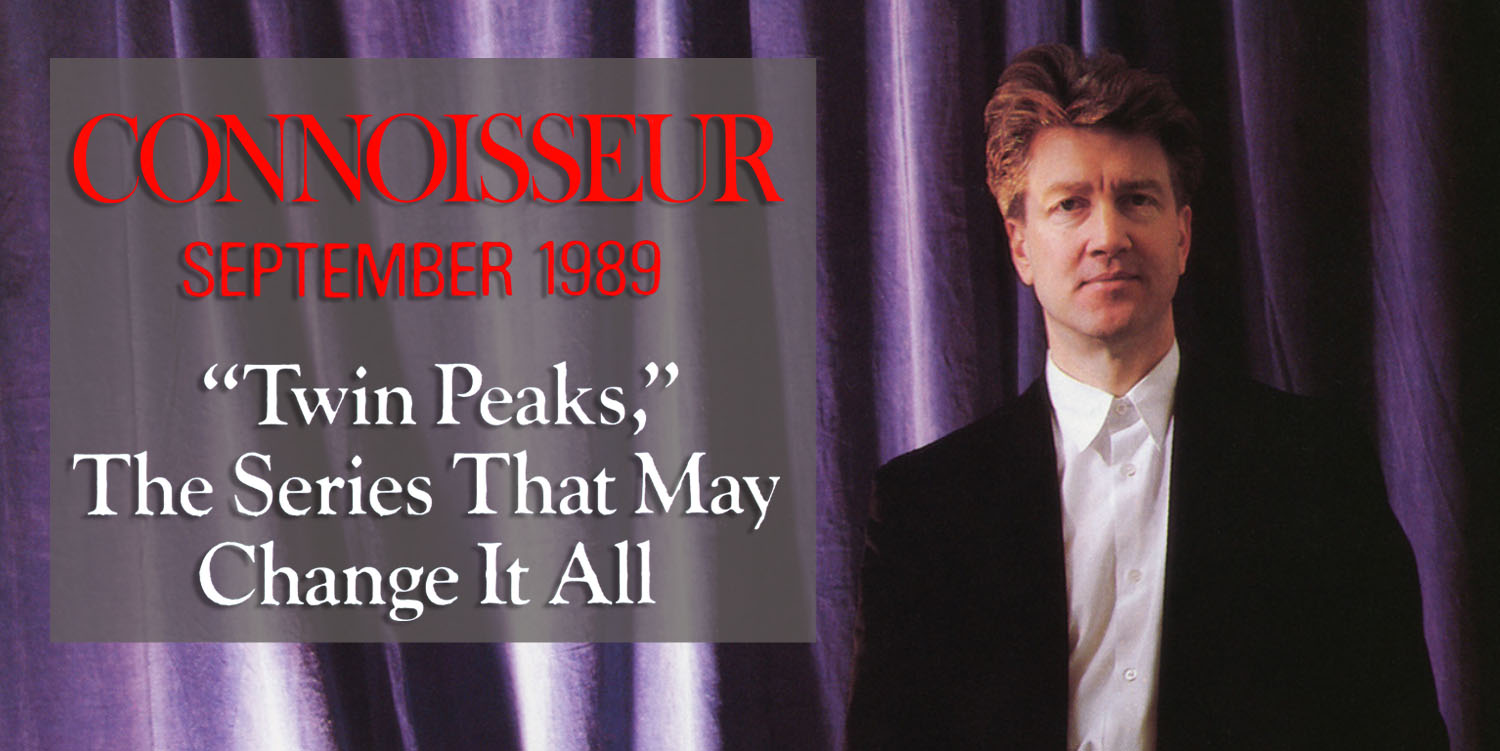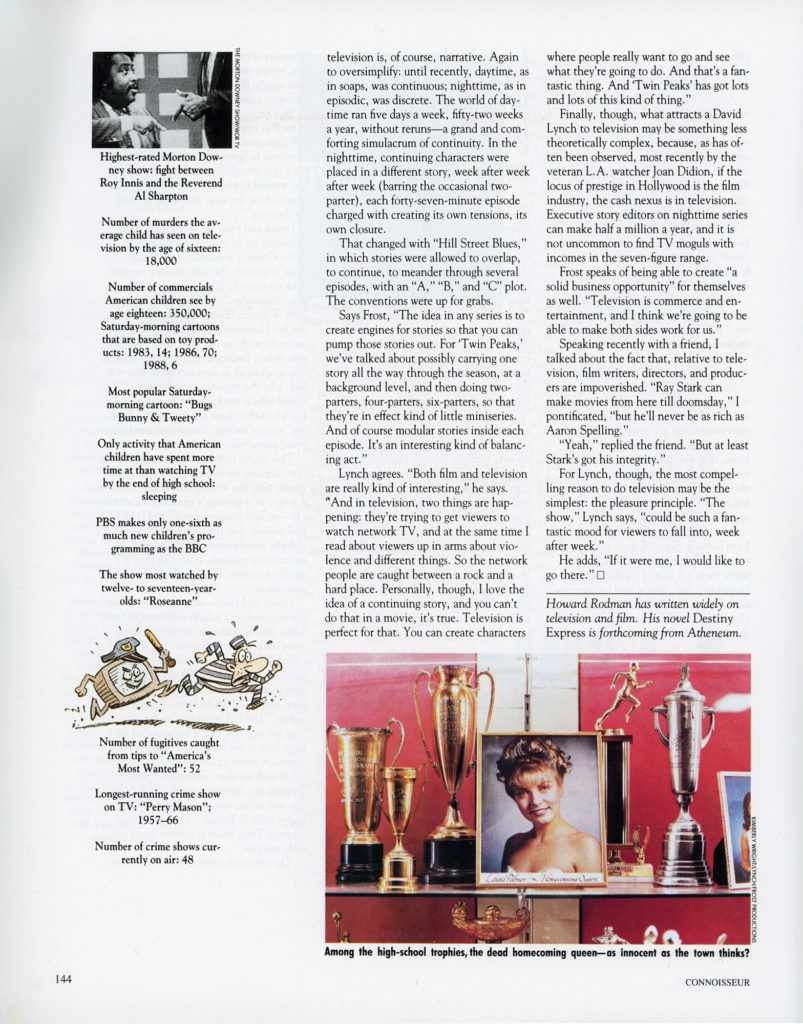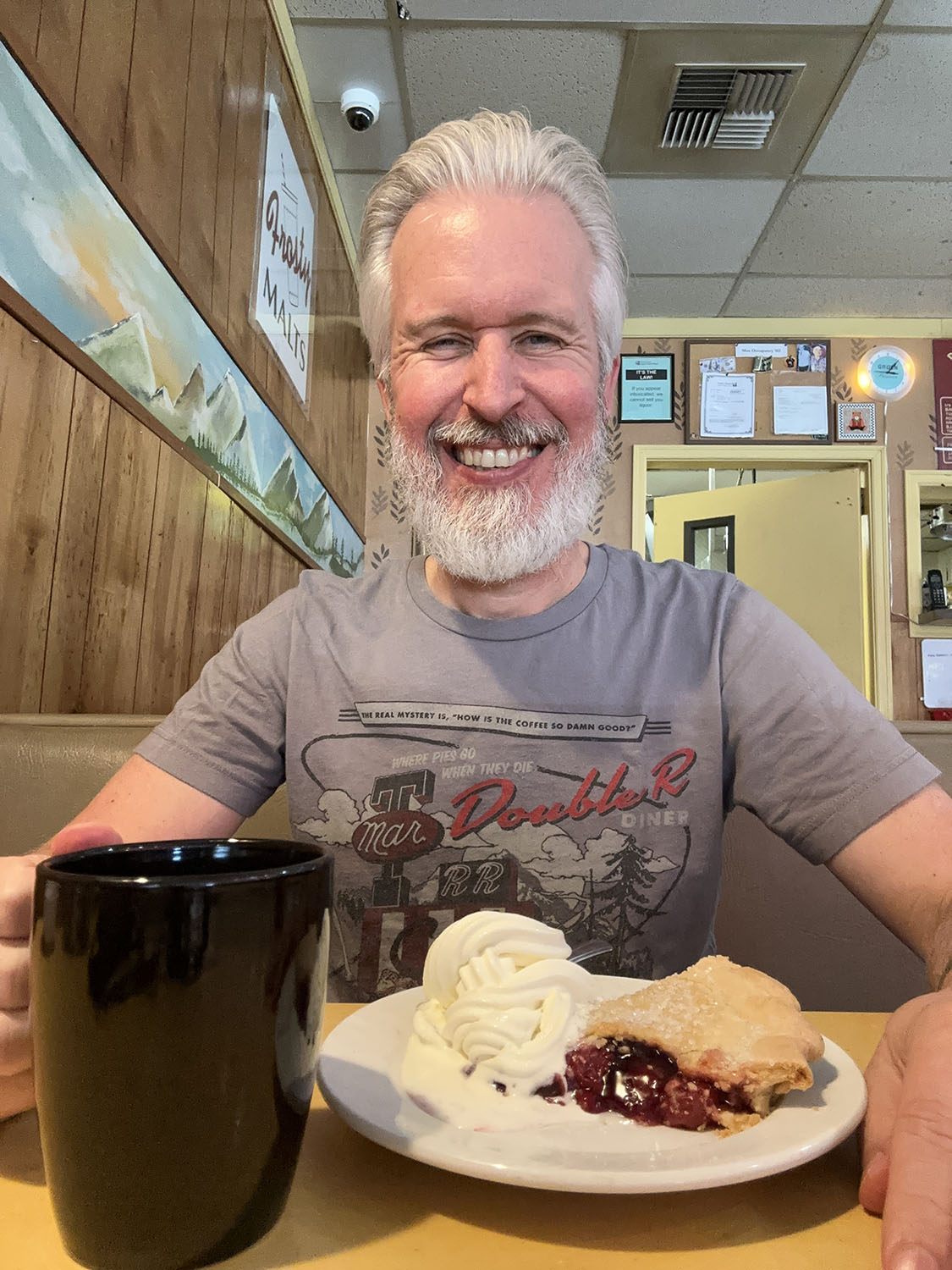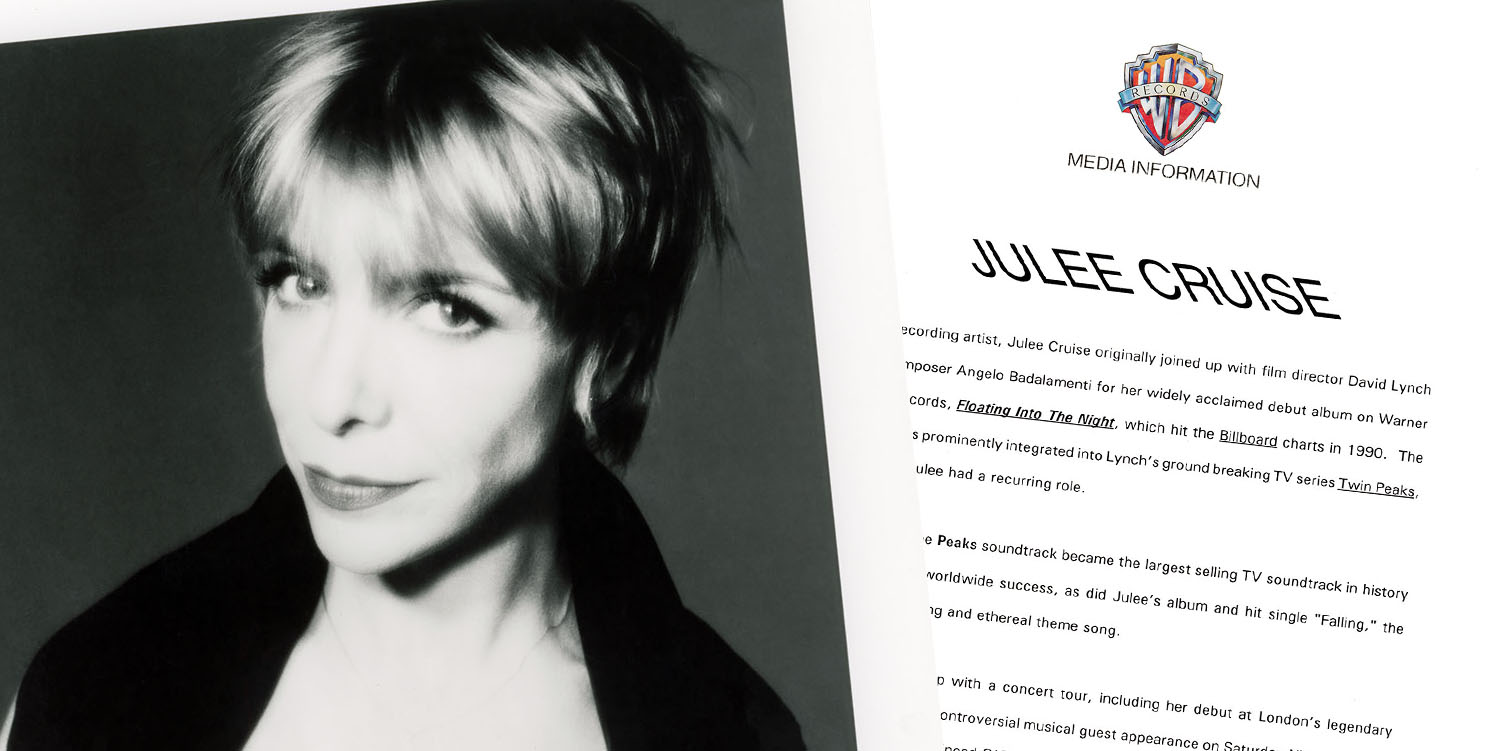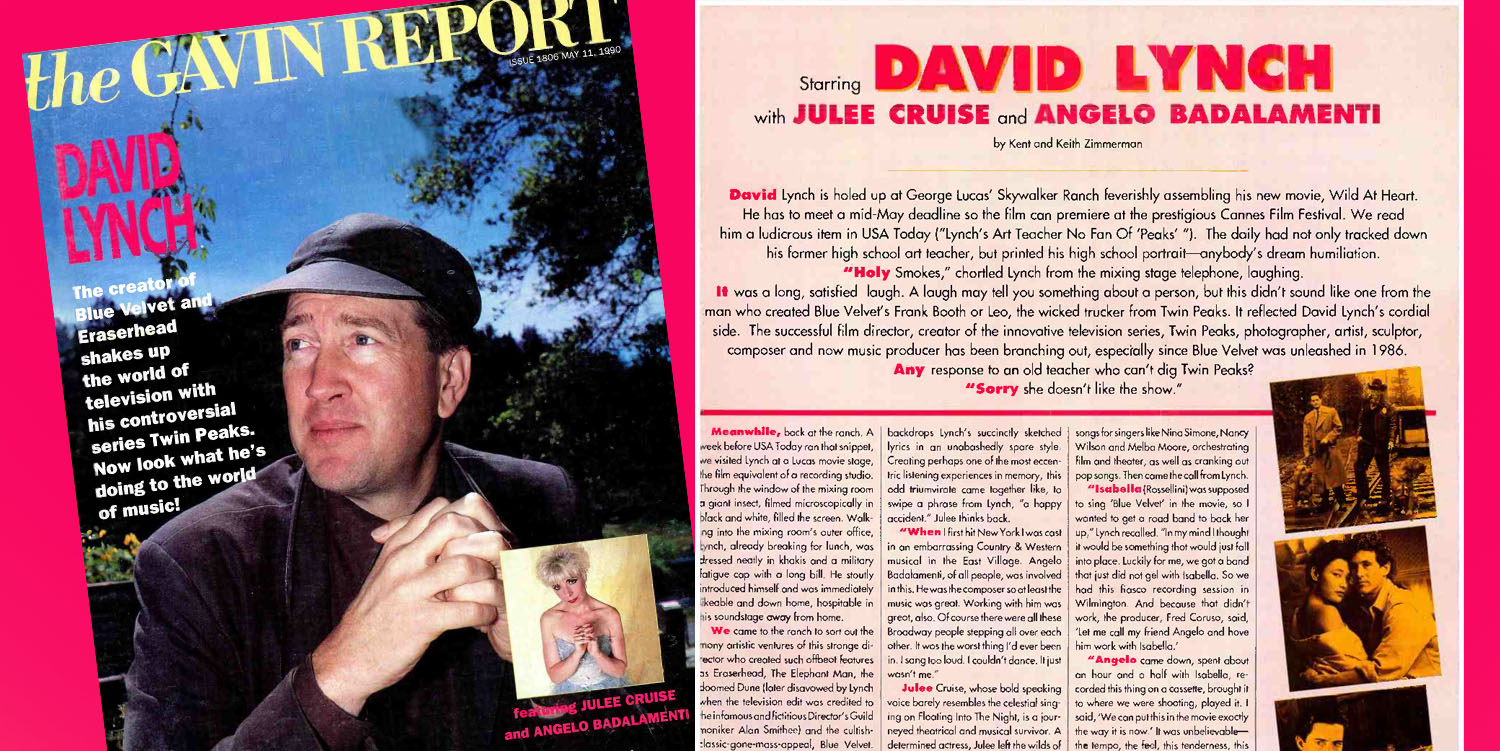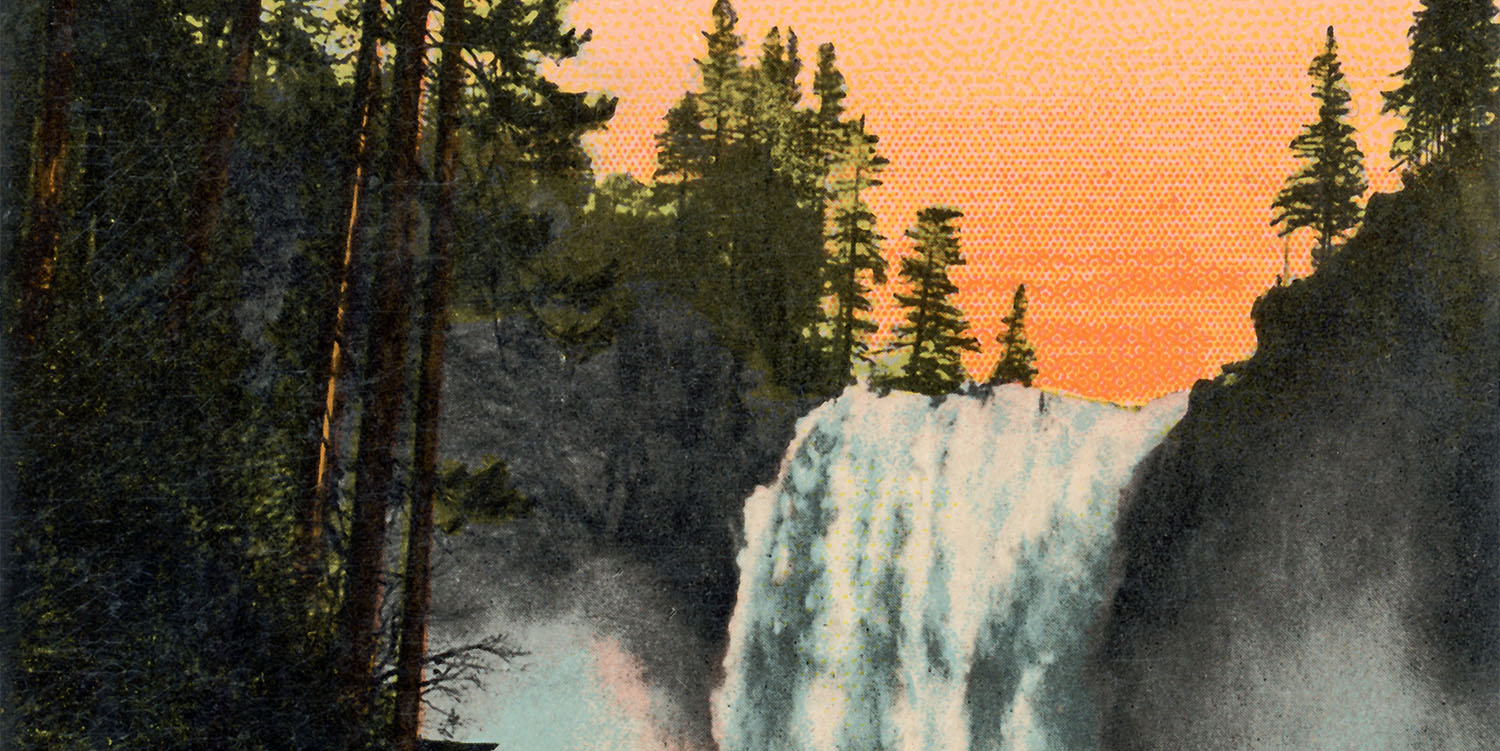Throughout the years I’ve been researching David Lynch and Mark Frost’s Twin Peaks, I found several references to a review in the September 1989 Connoisseur magazine. This was the first of many positive reviews about how the show would change television. I recently found a used copy of the magazine on eBay, which I examine from an archival perspective in this article.
CONNOISSEUR MAGAZINE
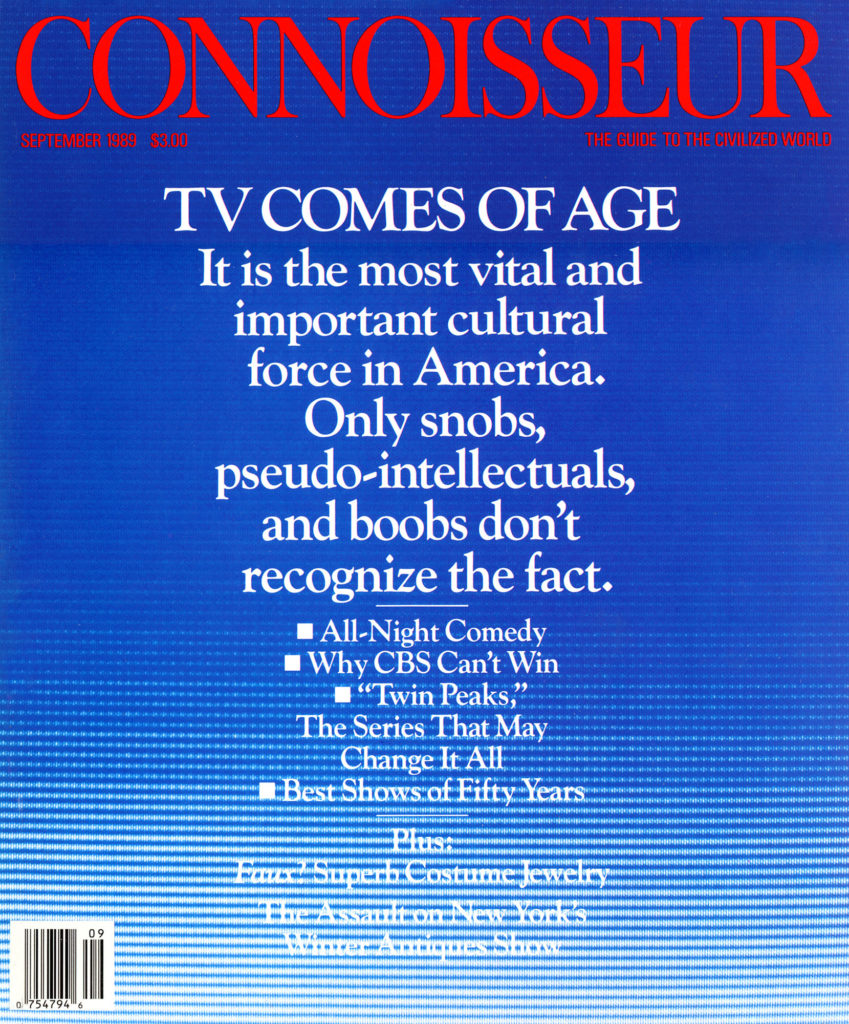
First published in 1901, the British magazine The Connoisseur (later known as Connoisseur) was acquired in 1927 by William Randolph Hearst. The magazine covered luxury topics such as antiques, collectibles and fine art.
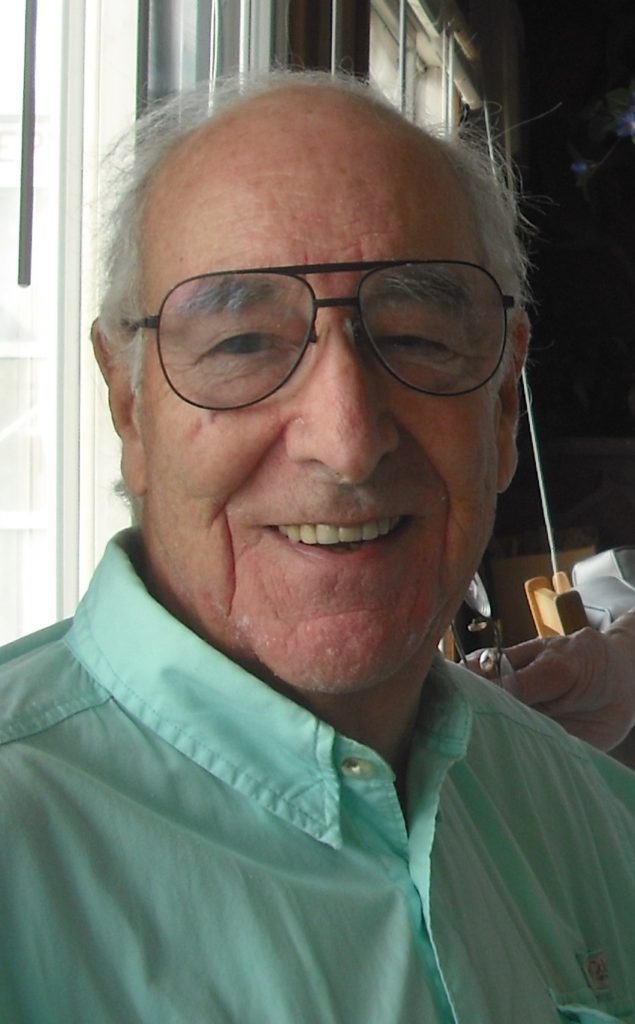
The American edition of Connoisseur was published by Hearst Corporation, in New York, and edited from 1981 to 1991 by Thomas Hoving. His father was Walter Hoving, head of Tiffany & Company, and his mother was Mary Osgood Field, a descendant of Samuel Osgood. Thomas, who passed in on December 10, 2009 at age 78, served as Parks Commissioner of New York City and later Director of the Metropolitan Museum of Art before editing Connoisseur.
Despite a monthly circulation of 300,000 copies, Hearst Magazines announced in 1992 that it would merge the content into Town and Country magazine.
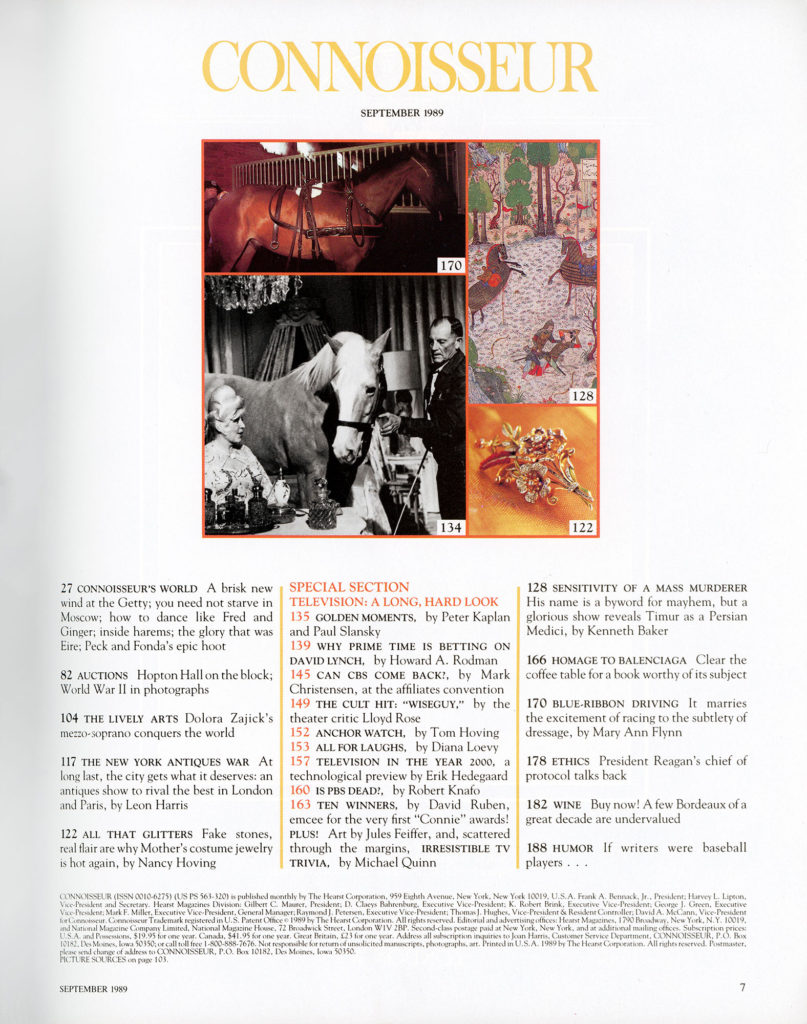
The September 1989 issue took a “long, hard look” look at the state of television. From pages 135-165, several well-known critics and authors wrote about various aspects of television from golden moment to news anchors to predictions of TV in the year 2000.
HOWARD A. RODMAN
The Twin Peaks article was penned by Howard A. Rodman who is a screenwriter, author and educator.

He is the former President of the Writers Guild of America, West; professor and former chair of the writing division at the USC School of Cinematic Arts; and an artistic director of the Sundance Institute Screenwriting Labs.
In his early 30s, he was editor-in-chief of The Cornell Daily Sun, and later published numerous articles in The New York Times, The Los Angeles Times, Los Angeles Magazine, and the Village Voice (for which he was a monthly columnist).
More recently in 2019, Rodman wrote The Great Eastern which he describes as his “19th-century anticolonial adventure novel starring Captain Nemo, Captain Ahab, and Isambard Kingdom Brunel.” An audio version of the book was released in June 2021. This prompted a brief exchange on Twitter between Mark Frost and Harold:
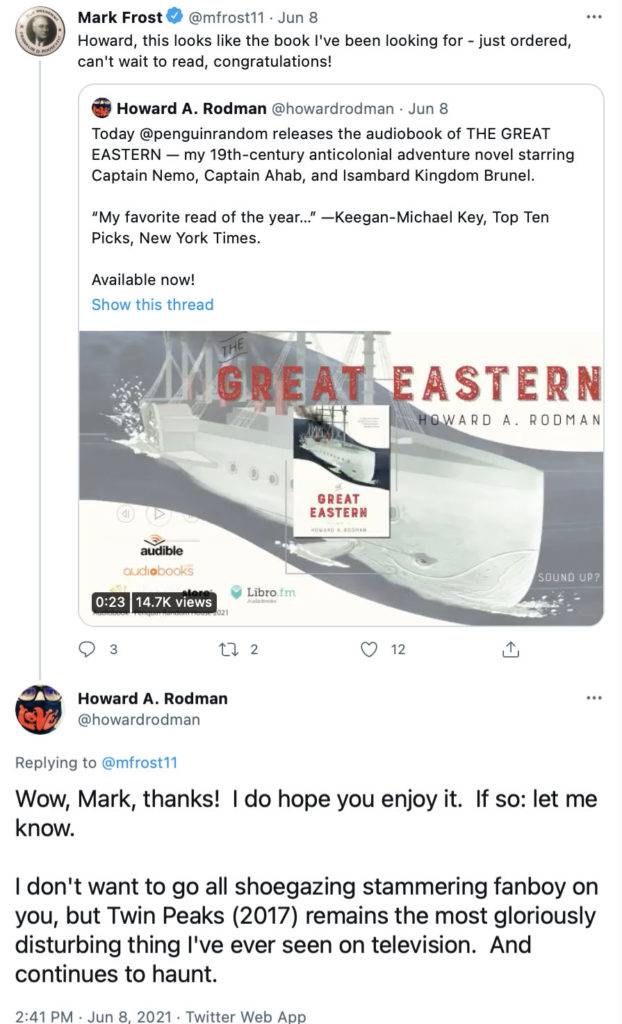
Seems like Rodman was also a fan of Twin Peaks season 3 on Showtime.
THE SERIES THAT WILL CHANGE TV
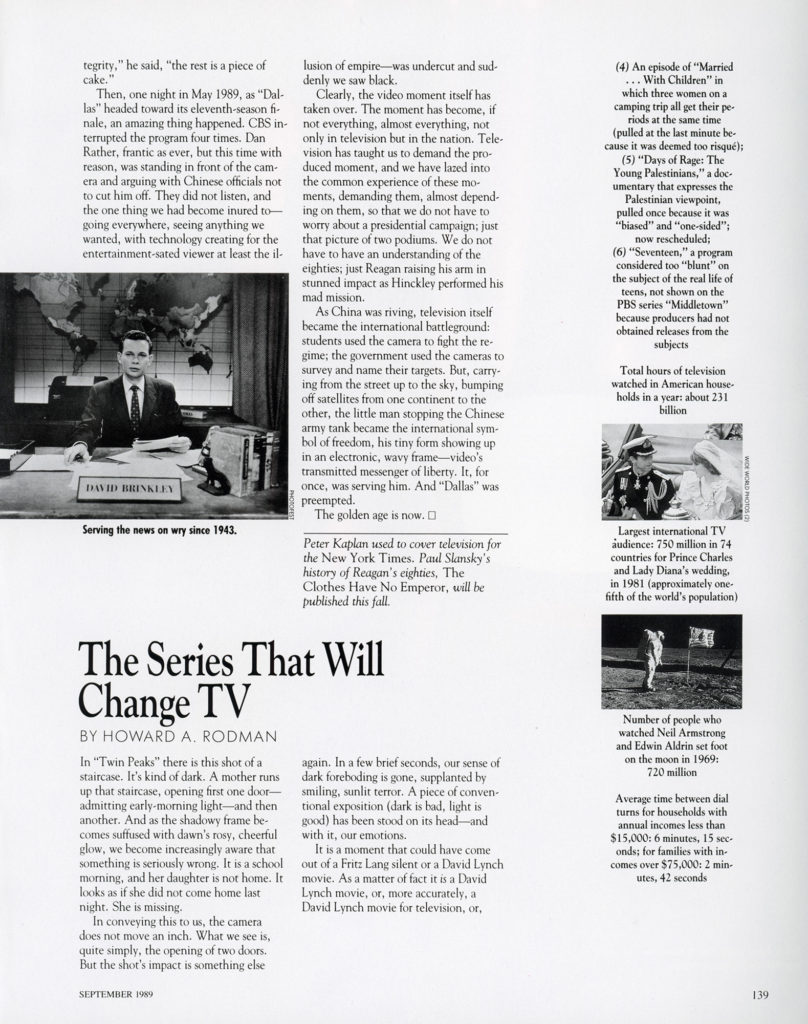
Rodman’s article, “The Series That Will Change TV,” begins at the bottom of page 139. He describes a particular scene early in the pilot episode that left a lasting impression.
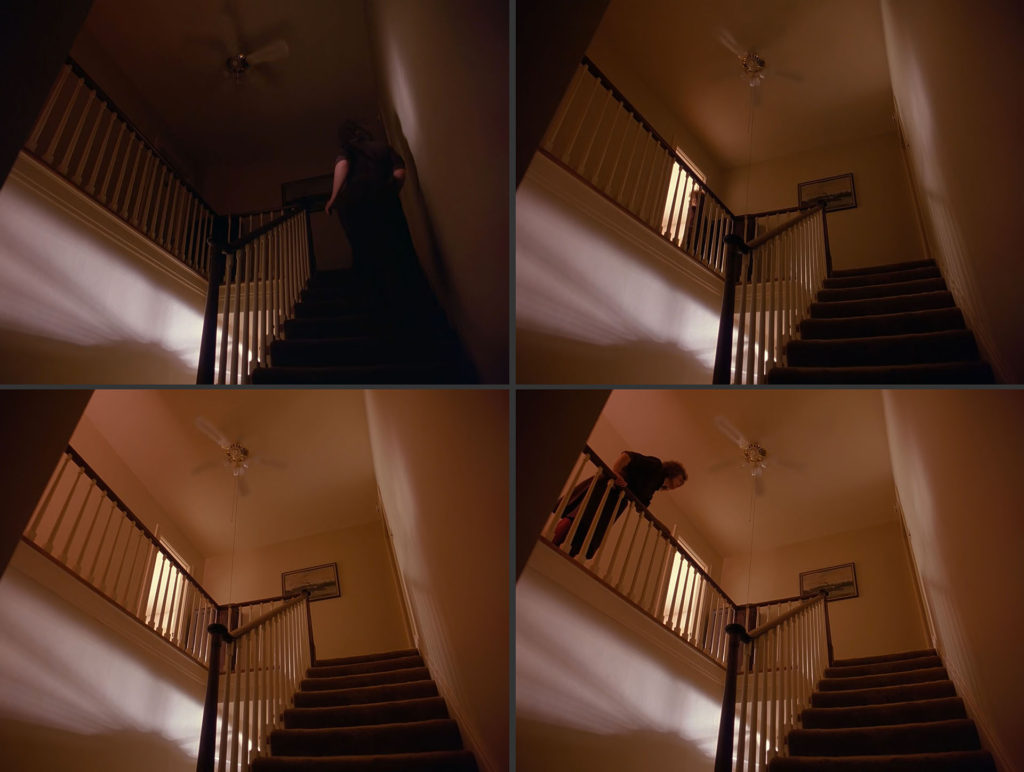
“In Twin Peaks there is this shot of a staircase. It’s kind of dark. A mother runs up that staircase, opening first one door—admitting early-morning light—and then another. And as the shadowy frame be-comes suffused with dawn’s rosy, cheerful glow, we become increasingly aware that something is seriously wrong. It is a school morning, and her daughter is not home. It looks as if she did not come home last night. She is missing.
In conveying this to us, the camera does not move an inch. What we see is, quite simply, the opening of two doors. But the shot’s impact is something else again. In a few brief seconds, our sense of dark foreboding is gone, supplanted by smiling, sunlit terror. A piece of conventional exposition (dark is bad, light is good) has been stood on its head—and with it, our emotions.”
Mr. Rodman definitely has a way with words. I’ll never look at this scene the same way.
DAVID LYNCH
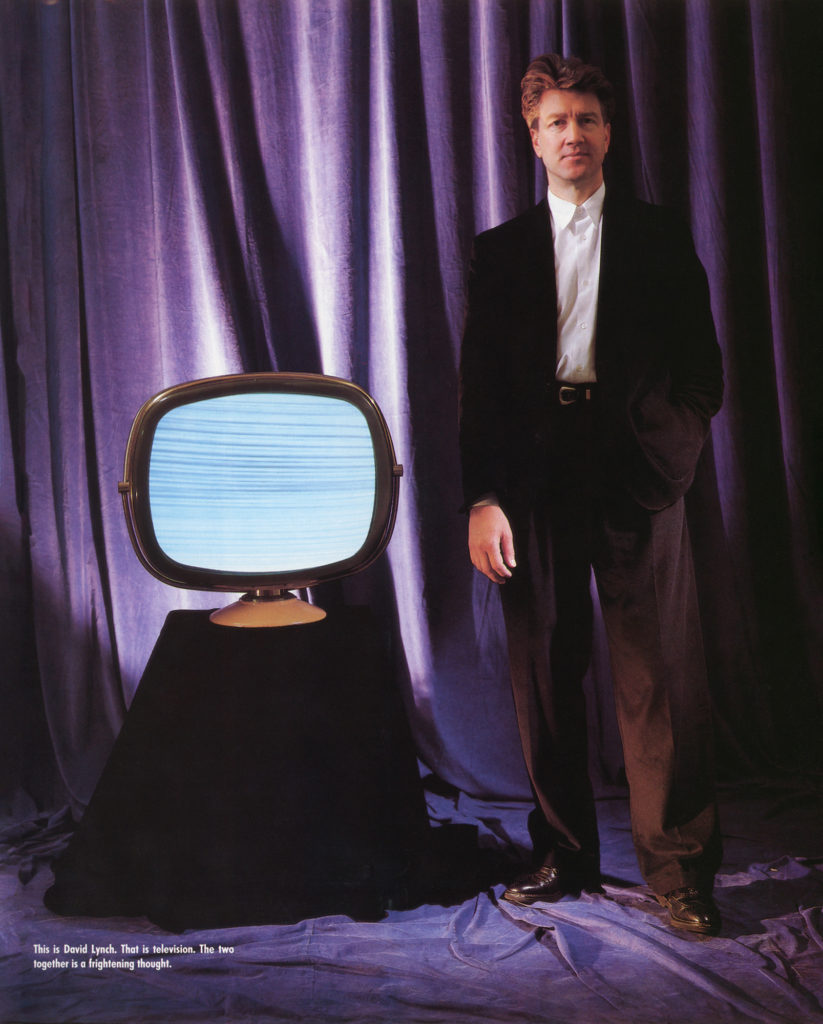
On page 140, David Lynch is seen standing next to a television with a caption that reads, “This is David Lynch. That is television. The two together is a frightening thought.”
The image was taken by Max Aguilera-Hellweg, photographer, writer, and filmmaker. He lives in Connecticut with his wife and children. He is also a medical doctor who has taken some pretty incredible images throughout his career. Check out his website.
TWIN PEAKS PUNK
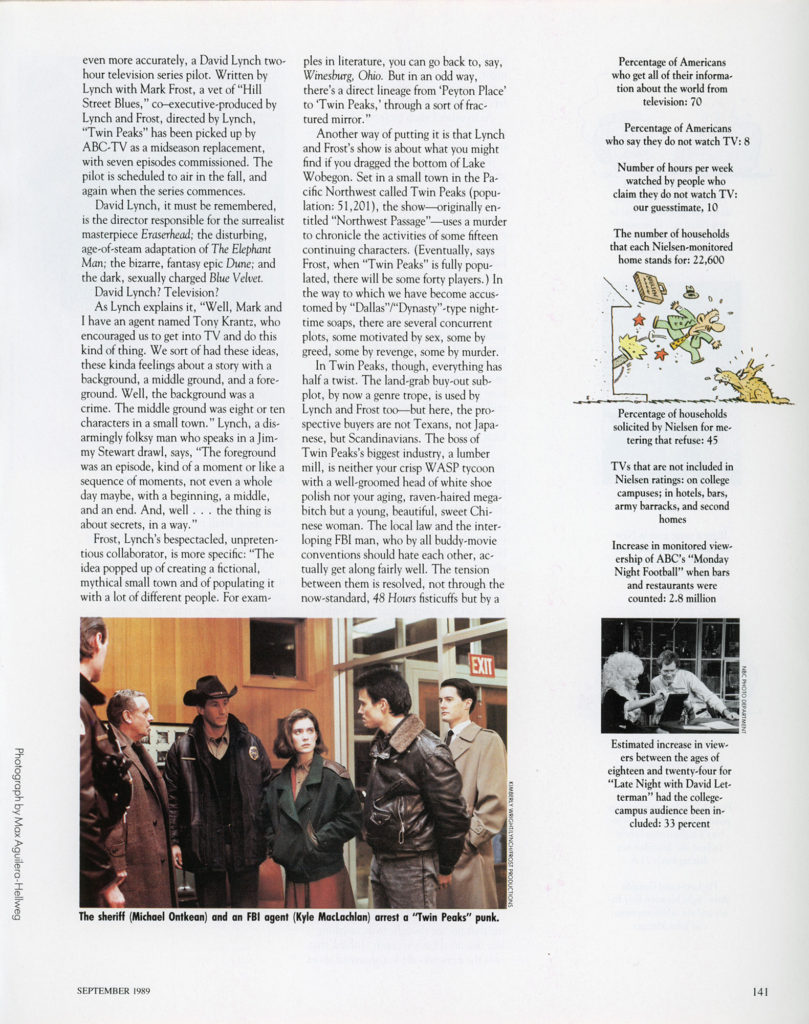
Rodman’s article continues on page 141 which offers some interesting quotes from Lynch and Frost.
As Lynch explains it, “Well, Mark and I have an agent named Tony Krantz, who encouraged us to get into TV and do this kind of thing. We sort of had these ideas, these kinda feelings about a story with a background, a middle ground, and a fore-ground. Well, the background was a crime. The middle ground was eight or ten characters in a small town … The foreground was an episode, kind of a moment or like a sequence of moments, not even a whole day maybe, with a beginning, a middle, and an end. And, well . . . the thing is about secrets, in a way.”
Frost, Lynch’s bespectacled, unpretentious collaborator, is more specific: “The idea popped up of creating a fictional, mythical small town and of populating it with a lot of different people. For examples in literature, you can go back to, say, Winesburg, Ohio. But in an odd way, there’s a direct lineage from ‘Peyton Place’ to ‘Twin Peaks,’ through a sort of fractured mirror.”
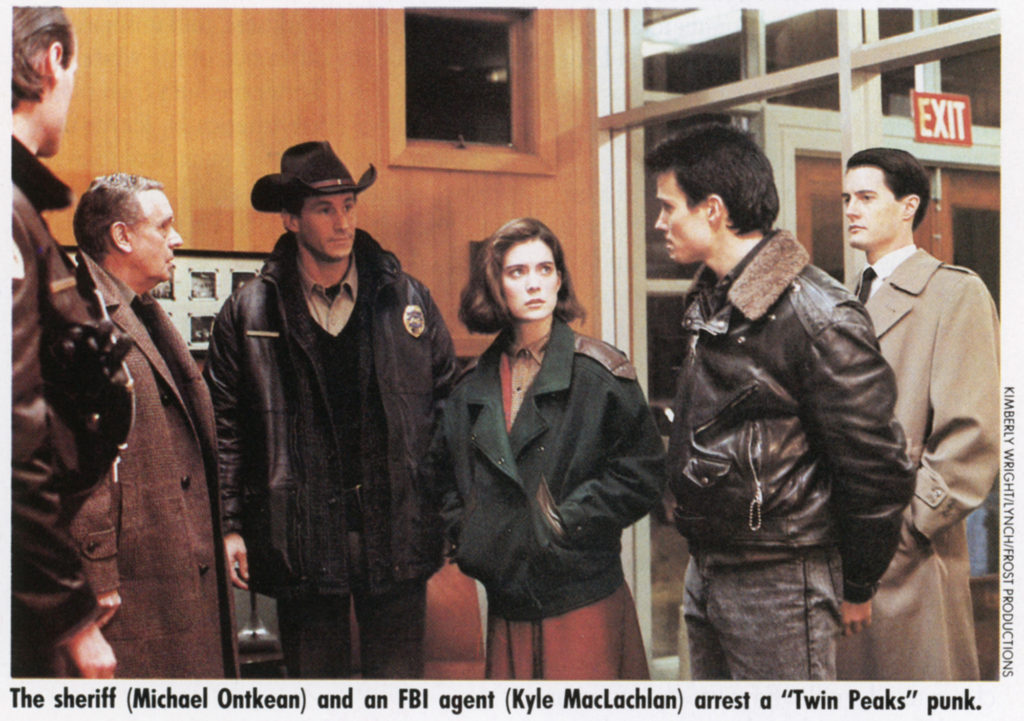
I love the caption under the publicity image of James “Twin Peaks punk” Hurley being arrested.
Rodman writes that “Northwest Passage” (the original title of the show before it was changed to “Twin Peaks”) “uses a murder to chronicle the activities of some fifteen continuing characters. (Eventually, says Frost, when “Twin Peaks” is fully populated, there will be some forty players.)”
DEAD GIRL IN SARAN WRAP
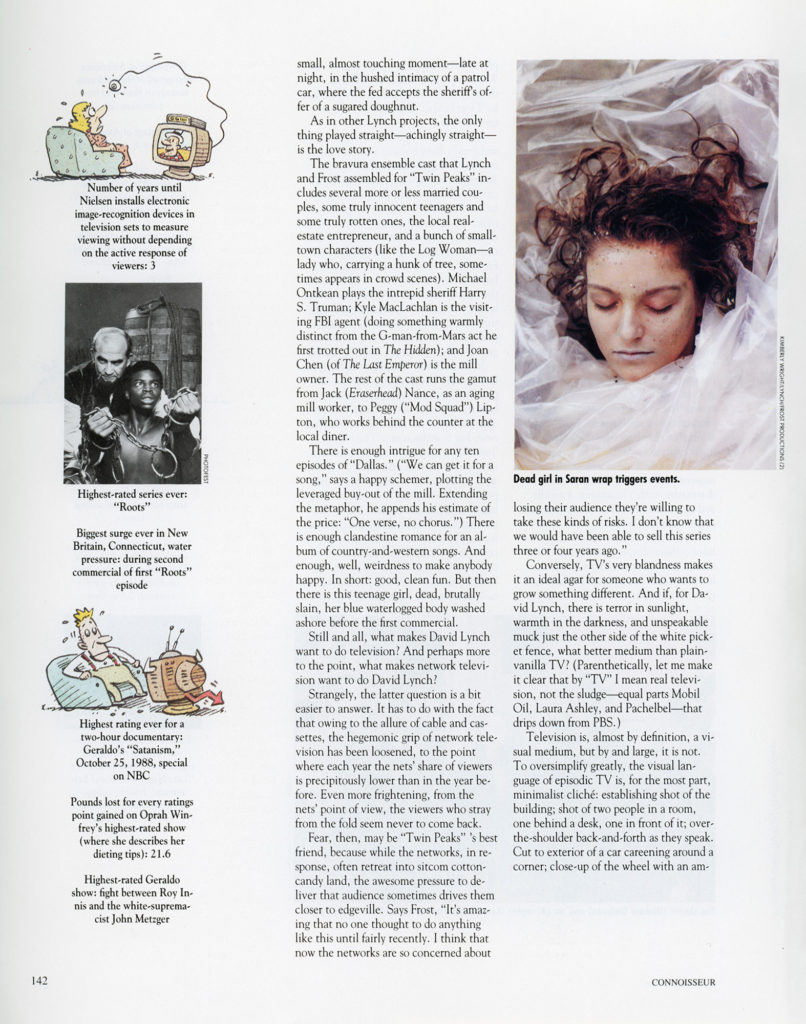
On Page 142, Howard wonders what made David Lynch get into television and why would network executives be interested in his works. He states that in the era of cable television and home video cassettes, viewership for the big three networks was continuing to decline. ABC saw Twin Peaks as a big risk that could help get viewers to return.
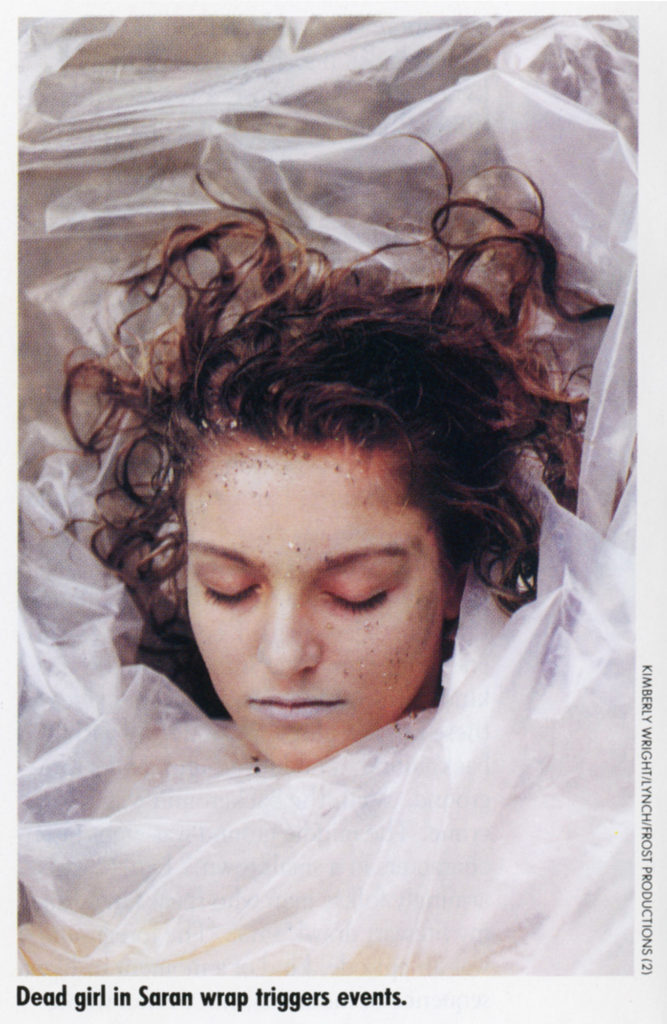
Mark Frost gives his perspective: “It’s amazing that no one thought to do anything like this until fairly recently. I think that now the networks are so concerned about losing their audience they’re willing to take these kinds of risks. I don’t know that we would have been able to sell this series three or four years ago.”
EIGHT LITTLE MOVIES
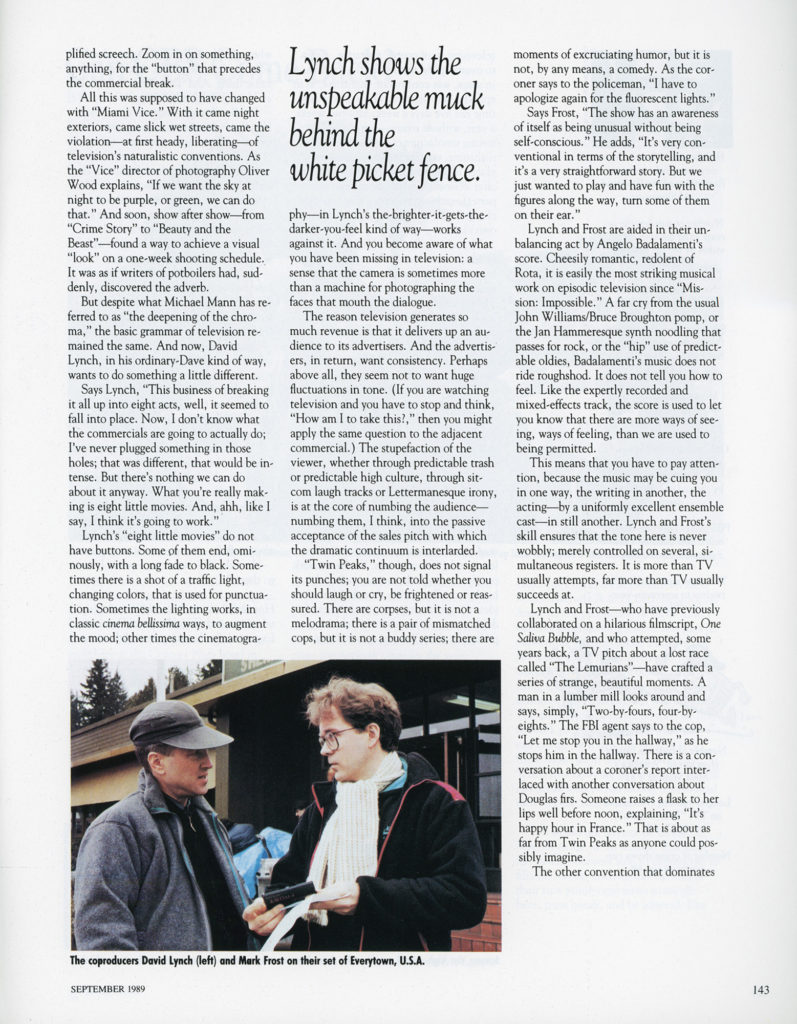
More quotes from David Lynch and Mark Frost are found on page 143:
Lynch explains, “This business of breaking [the show] all up into eight acts, well, it seemed to fall into place. Now, I don’t know what the commercials are going to actually do; I’ve never plugged something in those holes; that was different, that would be intense. But there’s nothing we can do about it anyway. What you’re really making is eight little movies. And, ahh, like I say, I think it’s going to work.”
Says Frost, “The show has an awareness of itself as being unusual without being self-conscious … It’s very conventional in terms of the storytelling, and it’s a very straightforward story. But we just wanted to play and have fun with the figures along the way, turn some of them on their ear.”
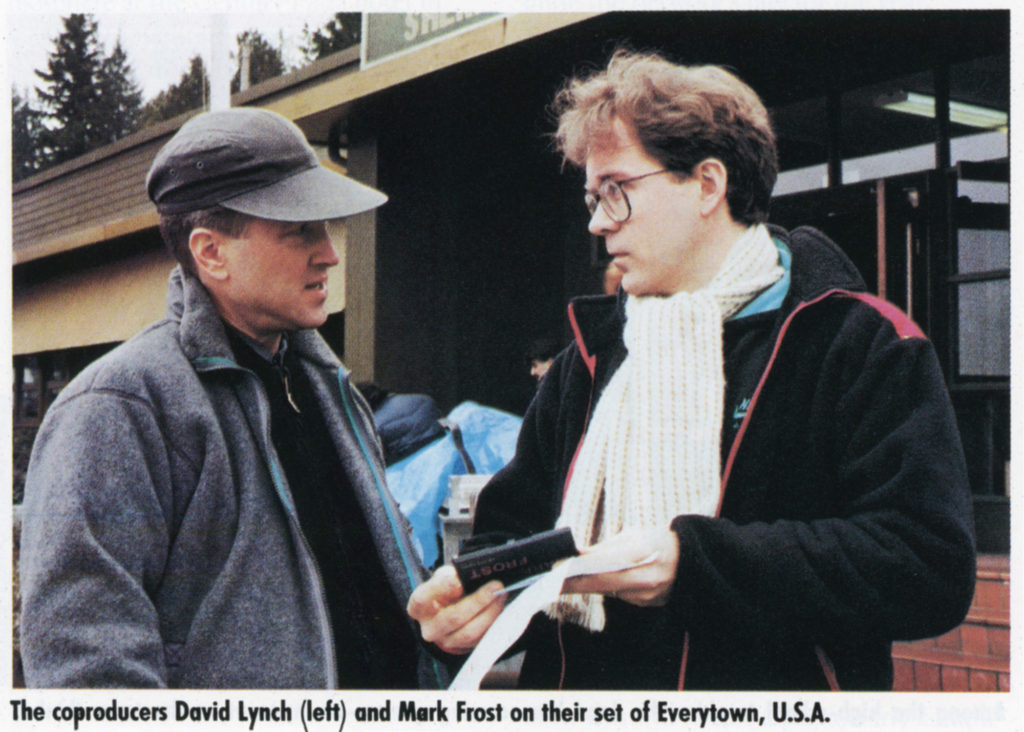
This shot of David and Mark outside the Twin Peaks Sheriff’s Department (aka the former Weyerhaeuser Sawmill office in Snoqualmie, Washington) was most likely shot on February 25, 1989 during initial principle photography.
NOT AS INNOCENT
For the final part of the article on page 144, Rodman offers even more insight about creating Twin Peaks from Frost and Lynch.
Frost says, “The idea in any series is to create engines for stories so that you can pump those stories out. For ‘Twin Peaks,’ we’ve talked about possibly carrying one story all the way through the season, at a background level, and then doing two-parters, four-parters, six-parters, so that they’re in effect kind of little miniseries. And of course modular stories inside each episode. It’s an interesting kind of balancing act.”
Lynch agrees. “Both film and television are really kind of interesting … And in television, two things are happening: they’re trying to get viewers to watch network TV, and at the same time I read about viewers up in arms about violence and different things. So the network people are caught between a rock and a hard place. Personally, though, I love the idea of a continuing story, and you can’t do that in a movie, it’s true. Television is perfect for that. You can create characters where people really want to go and see what they’re going to do. And that’s a fantastic thing. And ‘Twin Peaks’ has got lots and lots of this kind of thing.”
Frost spoke of being able to create “a solid business opportunity” for themselves as well.
“Television is commerce and entertainment, and I think we’re going to be able to make both sides work for us.”
For Lynch, though, the most compelling reason to do television may be the simplest: the pleasure principle.
“The show could be such a fantastic mood for viewers to fall into, week after week … If it were me, I would like to go there.”
I’m so glad they did.
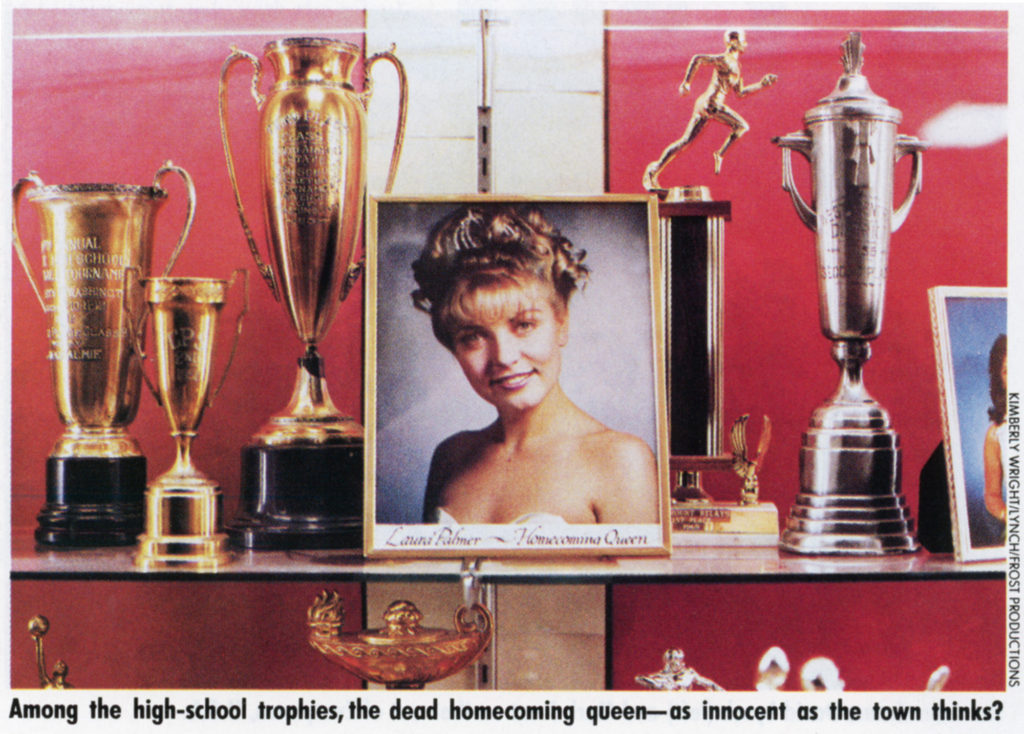
Thank you to Howard Rodman for capturing this important piece of early history of Twin Peaks. The insight offered by Lynch and Frost really helps set the stage for things to come.
Discover more from TWIN PEAKS BLOG
Subscribe to get the latest posts sent to your email.

